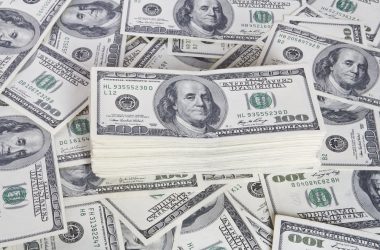On June 1, the United States will have to find a resolution concerning the current risk of national default.
The stock market falls in the meanwhile, and the most recent rise of interest rates doesn’t help the US economy – a worrisome condition that can have global repercussions.
What is debt ceiling and why it’s making headlines
Debt ceiling, or limit, is the maximum amount of money the United States can borrow to meet national obligations.
Debt ceiling is something that can make an economy extremely fragile, and even if it is not a common practice in today’s economies, the United States falls under the category of countries that use this practice.
According to economists, debt ceiling shouldn’t be a concern as long as a nation is able to maintain a sustainable growth rate, but the current inflation and the banking crisis don’t contribute to improving a condition that might have increasingly worrisome repercussions.
Biden meets leaders to reach a deal
On May 9, U.S. President Joe Biden met Kevin McCarthy (U.S. House Speaker), Mitch McConnell (Senate Republican Leader), and Democratic leaders to discuss the debt ceiling and try to find a deal.
While the threat of the U.S. default looms, the meeting did not appear to make considerable progress towards a possible solution to debt ceiling concerns.
Leaders and the president of the United States will meet again on Friday.
After the meeting, Joe Biden spoke to reporters, admitting that even if every participant fully understood the risks of a possible default, the parties involved hardly managed to find a common plan.
Is the debt ceiling excessively politicized?
Further comments from the participants at the meeting show that there might be an excessive politicization of the topic.
Chuck Schumer, Senate Majority Leader, affirmed that Speaker Kevin McCarthy did ont give any plan to remove default – as reported by CNBC.
Speaker McCarthy said that everyone just reiterated their positions, and that President Joe Biden was not able to indicate any place where to find savings in the federal budget.
Schumer added that there were substantial differences among the positions of the different parties.
This might have influenced the outcome of the meeting, which was not resolutive and not even close to a possible solution.
But Mitch McConnell, Senate Minority Leader, seemed more optimistic – according to the leader, the U.S. will not default on its debt – this is something that has never happened, so parties need to find an agreement.
In the meantime, it is safe to assess that a missed agreement could have catastrophic repercussions.
What the Treasury Department says
“Catastrophe” was precisely the word used by Janet Yellen, Treasury Secretary. She affirmed that if the U.S. does not find an agreement on debt ceiling this would cause an “economic catastrophe”.
Data shared by Moody’s in 2022 showed that a default would lead the global economy to a condition worse than the one experienced during the Great Recession.
U.S. bonds would be declassified. Countries like Russia and China – two BRICS countries – would have a significant advantage over the United States.
More immediate consequences would be observed for what concerned the job market: as reported by NBC, May projections shared by the Treasury Department and the Congressional Budget Office show that if the United States does not pay bills for just one week, 500 thousands U.S. citizens would lose their jobs – causing a contraction of the economy that would correspond to -0.6%.
A longer default period would result in a worse scenario, similar to the Great Recession, with over 8 million jobs lost.
Currently, the unemployment level remains low – lower than 3.5% – but inflation does not allow people to have a significant purchasing power.
The cost of borrowing is increasingly high, the unemployment rate could rise consistently, and expectations on expenditure are close to recession levels.
The risk of a possible default seems something incredible, but in any case, concerns about recession arise – and this is not a positive scenario.
We will need to wait for the next meeting to understand if the U.S. will find a possible solution to the worst possible scenario – default.
WeInvests is a financial portal-based research agency. We do our utmost best to offer reliable and unbiased information about crypto, finance, trading and stocks. However, we do not offer financial advice and users should always carry out their own research.
Read More









